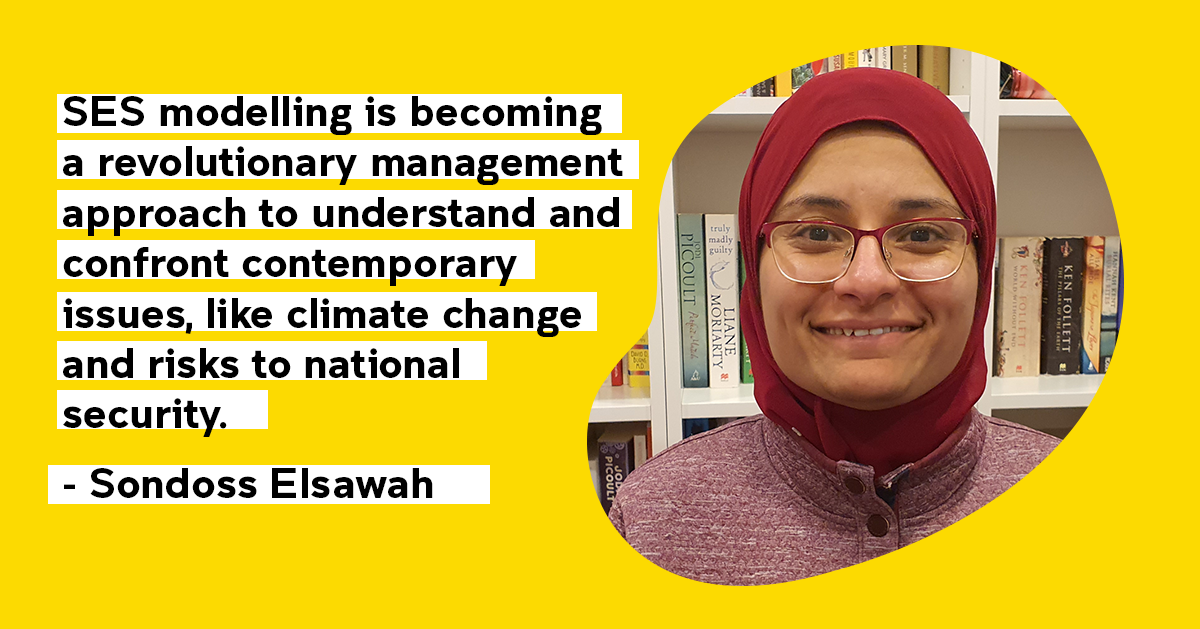Bridging the gap between stakeholder groups and policy makers
Bridging the communicative gap when working between socio, environmental and technological systems can prove a daunting task for most decision makers.
Bridging the communicative gap when working between socio, environmental and technological systems can prove a daunting task for most decision makers.

Bridging the communicative gap when working between socio, environmental and technological systems can prove a daunting task for most decision makers.
Current managers and decision makers can improve collaboration between diverse stakeholder groups by taking a systems-thinking and systems-modelling approach, according to UNSW Canberra Associate Professor Sondoss Elsawah.
“Socio-environmental systems modelling and systems thinking is becoming a forward thinking management approach as we begin to understand and confront contemporary issues such as climate change and risks to national security,"A/Prof Elsawah said.
“Sometimes the delayed and cumulative impacts of decisions can be caused by our limited capacity to foresee the result of present decisions and policies.
“Therefore to understand and deal with new and complex challenges, we need decision makers to break free from traditional ways of approaching complex problems, where a focus on narrow and defined sub-problems may lead to short-term solutions, but unintended consequences.”
A/Prof Elsawah said understanding the key challenges of modelling these complex systems, along with past and current efforts to overcome them, can be broken down into eight major categories.
While each category presents managers and decision makers with new challenges to identify, these challenges also require new ways of thinking to solve complex problems.
A/Prof Elsawah said expanding mindsets beyond traditional approaches to solving issues can help policy makers see the bigger picture.
“The goal is to give decision makers the insights to build connections between different types of data and information received, allowing them to see the bigger-picture in regards to complex contemporary issues,” A/Prof Elsawah said.
“Taking a systems thinking and systems modelling approach allows working groups to formulate systemic solutions to often complex and diverse problems, spanning across a range of disciplines."
The eight key challenges with SES systems modelling are below:
Bridging epistemological boundaries
This challenge relates to negotiating differences in individual values, and perspectives among team members, and bridging knowledge that differs among disciplines.
Applying an integrated treatment to uncertainty
Understanding how uncertainty is managed in SES modeling, as every step along the modeling process has known and unknown uncertainties attached to them.
Combining methods and data
Because SES modeling brings together multiple disciplines, understanding how qualitative and quantitative data can be integrated and how to attribute the value of different data sets in comparison to others presents several challenges.
Dealing with scale and scaling
SES systems often operate across a variety of scales, spatial, temporal and organisational, say for example, a team may be faced with the obstacle of how to link processes that occur over a slow timescale with those that are more active and frequent.
Capturing structural changes
As complex and non-linear systems, SES modeling and systems are not impervious to systemic shifts, therefore we lack data on the basic processes that cause these shifts and also, current methods for modeling these changes are limited.
Integrating the human dimension
The lack of funding in social science research has resulted in insufficient data and insufficient resources available for collaborating with enviroscientists, however computational social-scientists are moving forward with research that will open up avenues to generalise in terms of social and economic context, yet further research to assist with generalising findings about human behaviour and decision-making is needed.
Elevating the adoption of SES models and impact on policy
There is a gap between SES model development and the actual use of models to support collaborative decision making.
Leveraging new data types and sources
This relates to not only the tracking of human movements but also heterogeneous data, to provide incentives into decisions and preferences.
The video tutorial above builds on a 2020 paper from A/Prof Elsawah and associates, ‘Eight grand challenges in socio-environmental systems modeling’, published in Socio-Environmental Systems Modeling.
Confronting issues of scale in socio-environmental systems modelling
A/Prof Sondoss Elsawah will speak more on the problems of scale in socio-environmental systems modelling at a free online panel discussionm hosted by The Integrated Assessment Society, The National Socio-Environmental Synthesis Center and the Socio-Environmental Systems Modeling journal.
Date: 29th June, 2021
Time: 5am AEST